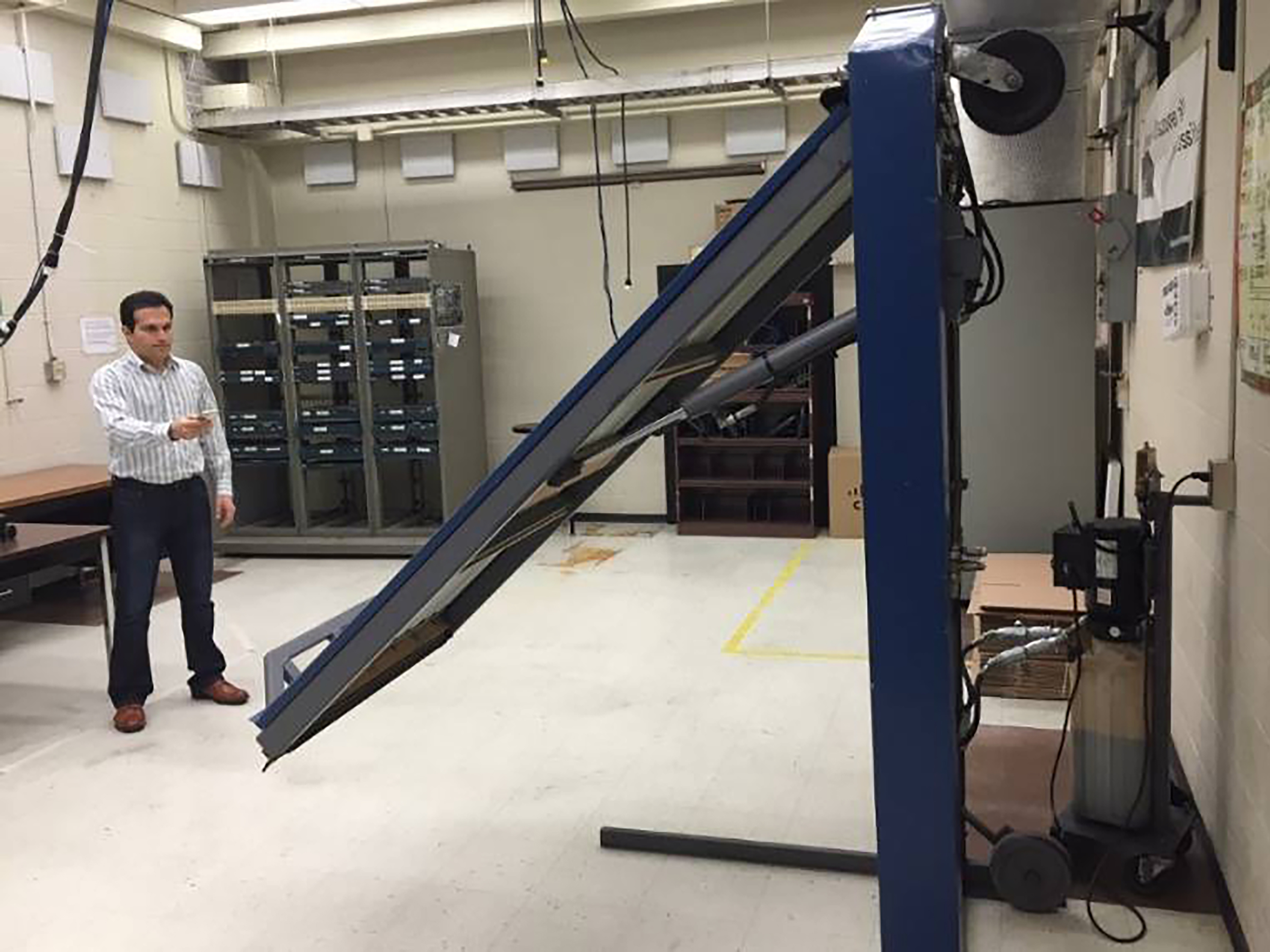If necessity is the mother of invention, it may also be the source of new patents: The story of how Dr. Ali Eslami became the holder of US Patent 10,689,898 – his first – begins with a local company asking for an invention to save it money.
The company, a licensee of a bigger company that manufactures and installs industrial lift doors, was paying another company $300 to $450 to buy remotes for each door. The company, which asked not to be identified, approached Eslami about creating an app that could control the doors remotely by smartphone instead.
“My field is wireless and mobile communications and this project was fitting my area very well,” said Eslami, an assistant professor in the Department of Electrical engineering and Computer Science.
Working with colleagues Dr. Abu Asaduzzaman and Mohammad H. Erjaei, his former graduate student, Eslami developed a solution to meet the company’s needs: an app combined with remote cameras, sensors and lift controls connected to Wi-Fi, which allow someone to remotely observe, open and close a commercial lift door.
“The invention provides means for enabling a user to control a large industrial/commercial door unit (of a warehouse, machine shed, barn, or airplane hangar) without using a mounted door panel or dedicated remote control devices,” Eslami explained.
“The user can monitor the door status by looking at live streaming video of the door in the mobile application. This is particularly useful for giant commercial "lift" doors… to prevent the door from hitting and damaging objects in the door’s path, ie. cattle or expensive machinery.” Users can manage multiple doors from one app loaded on a mobile device, which also provides a log history of each door's status.
Eslami worked with Wichita State’s Office of Tech Transfer and Commercialization to file the paperwork to patent his team’s invention. He received word the patent for “Internet-Based Remote Control and Monitoring System for Commercial Doors Using Mobile Devices” was granted on June 23.
“We have been in touch with a couple of companies for licensing the patent while it was pending. I think we have a good shot at getting a licensing deal now that it is granted,” said Eslami.
“What Dr. Eslami and his team were able to accomplish for this local company goes to the heart of what we mean when we say we are an economic driver for the state of Kansas,” said Dennis Livesay, dean of the College of Engineering. “We have the will and talent to provide innovative cost-saving solutions for companies, big and small.”
Now, in addition to saving the local company money by eliminating the need to buy dedicated remotes, Dr. Eslami stands to make money for himself as well as Wichita State. Under university policy, faculty and the university each receive 50% of revenue generated by faculty patents.
According to Robert D. Gerlach, executive director of the Office of Tech Transfer and Commercialization, licensing revenue for the university is a modest but growing source of income. “The good news is it’s a positive upward trend,” Gerlach said.
Getting a patent is a significant accomplishment. Nearly a dozen have been granted to College of Engineering faculty in the past three years. Those awarded patents include, but are not limited to: Dr. Vinod Namboodiri for a beacon-based indoor wayfinding system; Dr. Viswanathan Madhavan for an apparatus and method for simulating machining and other forming operations; Dr. Shuang Gu for a method to convert of natural gas into clean liquid fuels; Dr. Hyuck M. Kwon for a system and method for generating exact symbol error rates of frequency-hopped signals; and Dr. Ramazan Asmatulu for a composite magnetic nanoparticle drug delivery system.


 Kelly Johnson
Kelly Johnson